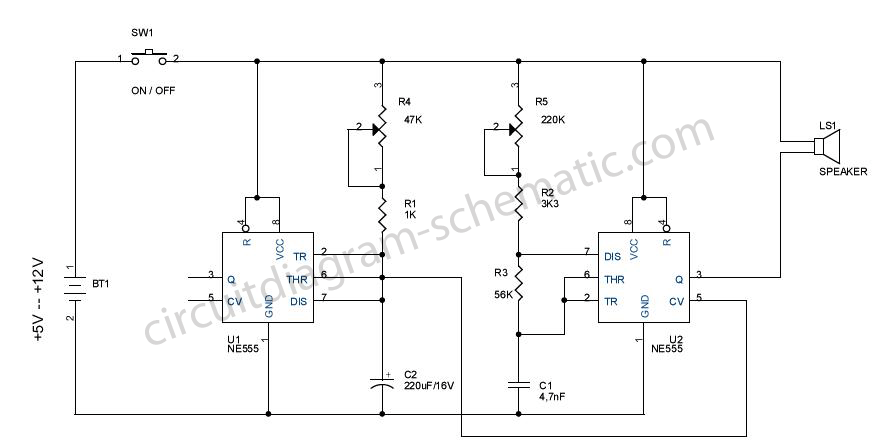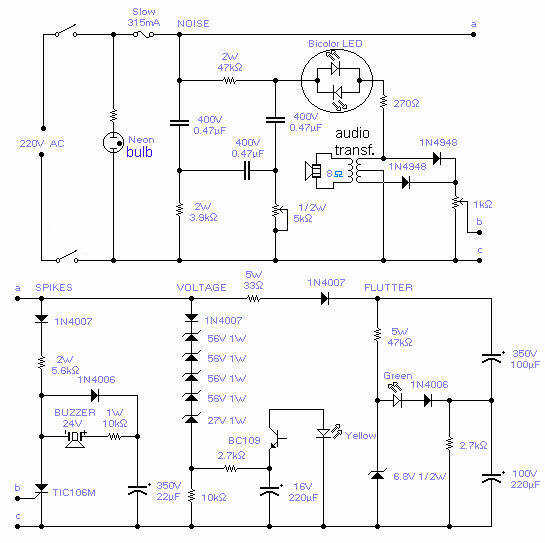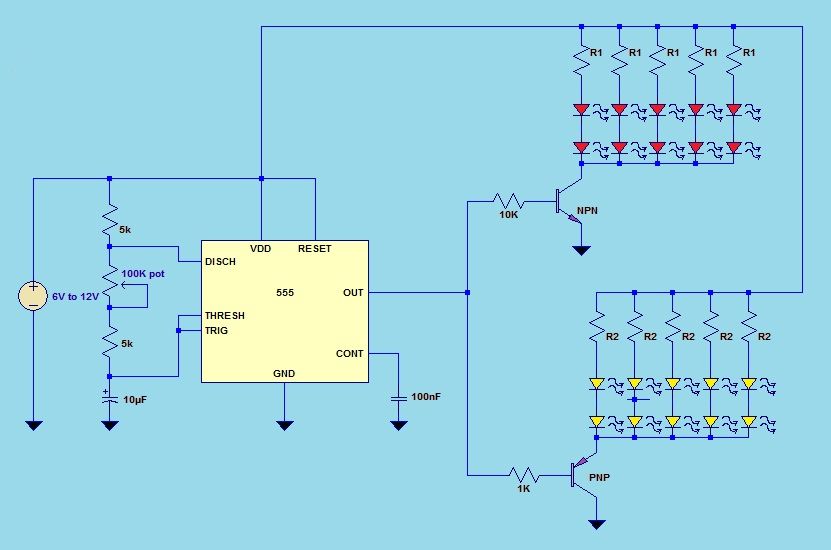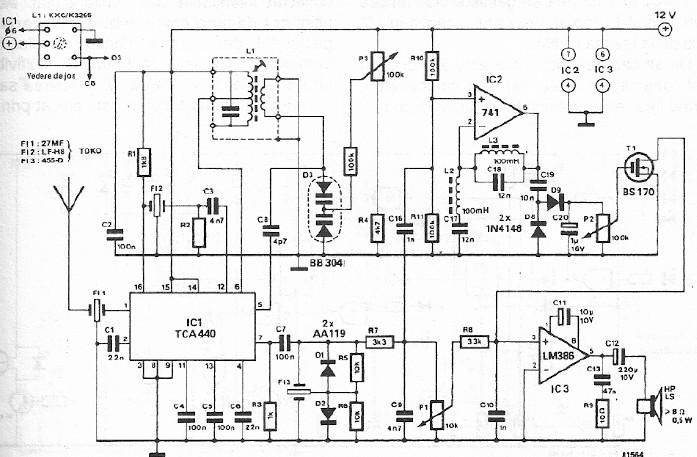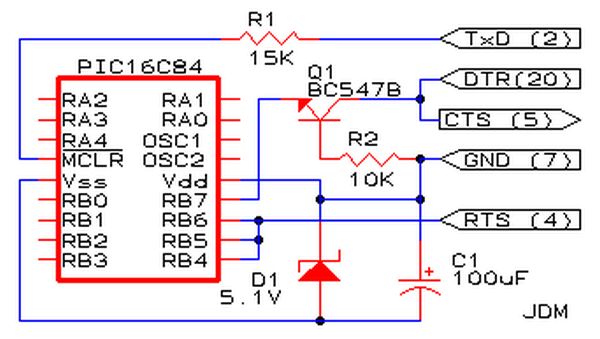
Acceleration Monitor using ADXL202 and AVR
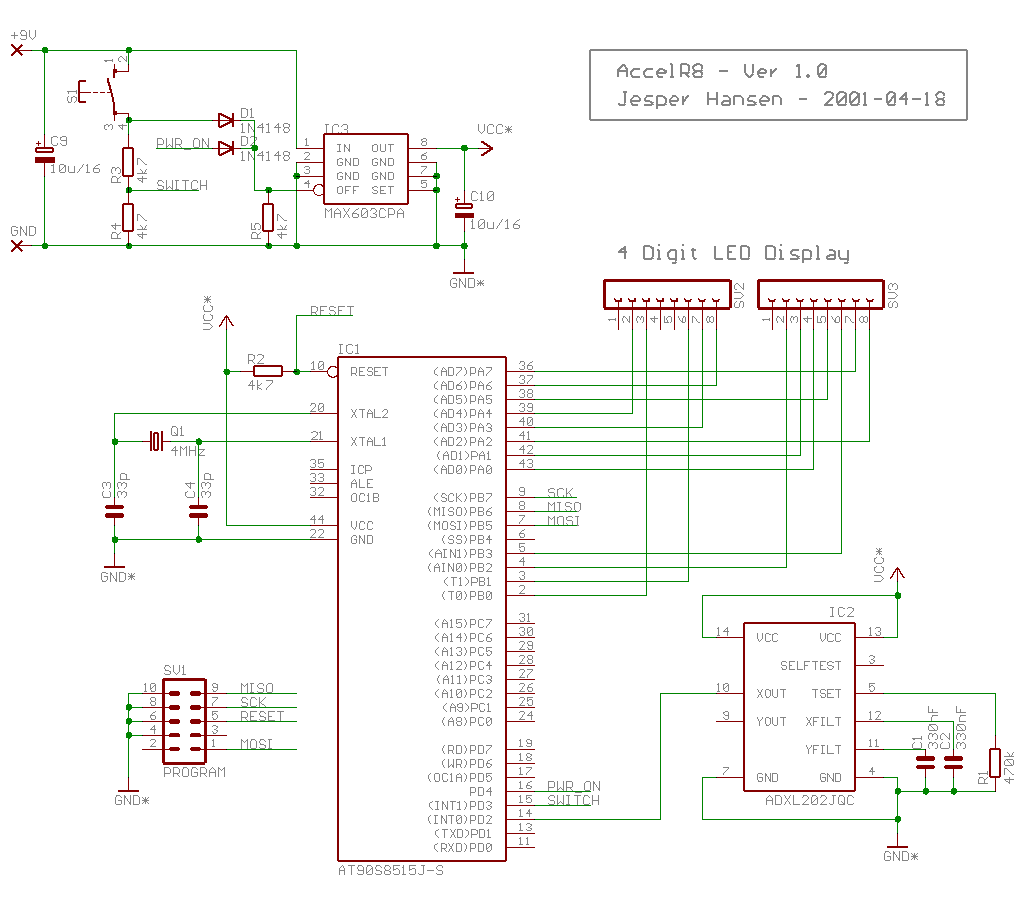
The schematic indicates that the AccelR8 utilizes only three integrated circuits (ICs). An AVR 8515 microcontroller performs the computational tasks and manages the other circuits. A MAX603 regulates voltage and controls the power-on and power-off functions. The key component enabling the system's functionality is the ADXL202 from Analog Devices, which measures acceleration. This chip features a compact micro-machined polysilicon structure on a silicon wafer. The structure acts as part of a capacitor, allowing for the measurement of deflection caused by acceleration. In this application, only one axis of the ADXL202 is utilized, and it outputs acceleration data as a variable duty-cycle square wave. The AVR 8515 microcontroller calculates acceleration by analyzing the pulse width and period relationship. The resulting acceleration data is processed and displayed.
The AccelR8 schematic is designed to provide a compact and efficient solution for measuring acceleration using minimal components. The AVR 8515 microcontroller serves as the central processing unit, executing the necessary algorithms to interpret the data received from the ADXL202 accelerometer. The MAX603 voltage regulator ensures that the microcontroller and the accelerometer operate within their specified voltage ranges, providing stable power during operation.
The ADXL202 accelerometer employs a unique micro-machined structure that is sensitive to acceleration forces. This structure, which is part of a capacitor, experiences deflection when subjected to acceleration, allowing for precise measurement of movement along one axis. The output from the ADXL202 is a variable duty-cycle square wave, where the duty cycle correlates directly with the magnitude of the acceleration detected.
The AVR 8515 microcontroller processes this output by measuring the pulse width and period of the square wave signal. By performing calculations based on these measurements, the microcontroller can accurately determine the acceleration value. This calculated data is then formatted for display, enabling users to visualize the acceleration metrics in real-time.
Overall, the schematic design of the AccelR8 demonstrates an effective integration of these three ICs, resulting in a reliable and efficient system for acceleration measurement and analysis. The combination of the AVR 8515, MAX603, and ADXL202 provides a robust platform for applications requiring precise motion detection and monitoring.The schematic show that the AccelR8 only uses 3 IC`s. An AVR 8515 microcontroller do the calculation work and controls the other circuits. An MAX603 controls voltage and power-on/power-off. And the chip that makes it all possible, the ADXL202 from Analog Devices measures the acceleration. This chip is a small wonder. It uses a tiny micro machined polysilicon structure on the silicon wafer. The structure is part of a capacitor, so deflection of the structure (by acceleration) can be measured. In this case, we only use one of the axes, and the ADXL202 outputs this data as a variable duty-cycle squarewave.
The 8515 calculates the acceleration by measuring the pulsewidth/period relationship. The acceleration is then used in further calculations, and the resulting data is show on the display. 🔗 External reference
The AccelR8 schematic is designed to provide a compact and efficient solution for measuring acceleration using minimal components. The AVR 8515 microcontroller serves as the central processing unit, executing the necessary algorithms to interpret the data received from the ADXL202 accelerometer. The MAX603 voltage regulator ensures that the microcontroller and the accelerometer operate within their specified voltage ranges, providing stable power during operation.
The ADXL202 accelerometer employs a unique micro-machined structure that is sensitive to acceleration forces. This structure, which is part of a capacitor, experiences deflection when subjected to acceleration, allowing for precise measurement of movement along one axis. The output from the ADXL202 is a variable duty-cycle square wave, where the duty cycle correlates directly with the magnitude of the acceleration detected.
The AVR 8515 microcontroller processes this output by measuring the pulse width and period of the square wave signal. By performing calculations based on these measurements, the microcontroller can accurately determine the acceleration value. This calculated data is then formatted for display, enabling users to visualize the acceleration metrics in real-time.
Overall, the schematic design of the AccelR8 demonstrates an effective integration of these three ICs, resulting in a reliable and efficient system for acceleration measurement and analysis. The combination of the AVR 8515, MAX603, and ADXL202 provides a robust platform for applications requiring precise motion detection and monitoring.The schematic show that the AccelR8 only uses 3 IC`s. An AVR 8515 microcontroller do the calculation work and controls the other circuits. An MAX603 controls voltage and power-on/power-off. And the chip that makes it all possible, the ADXL202 from Analog Devices measures the acceleration. This chip is a small wonder. It uses a tiny micro machined polysilicon structure on the silicon wafer. The structure is part of a capacitor, so deflection of the structure (by acceleration) can be measured. In this case, we only use one of the axes, and the ADXL202 outputs this data as a variable duty-cycle squarewave.
The 8515 calculates the acceleration by measuring the pulsewidth/period relationship. The acceleration is then used in further calculations, and the resulting data is show on the display. 🔗 External reference
Warning: include(partials/cookie-banner.php): Failed to open stream: Permission denied in /var/www/html/nextgr/view-circuit.php on line 713
Warning: include(): Failed opening 'partials/cookie-banner.php' for inclusion (include_path='.:/usr/share/php') in /var/www/html/nextgr/view-circuit.php on line 713
